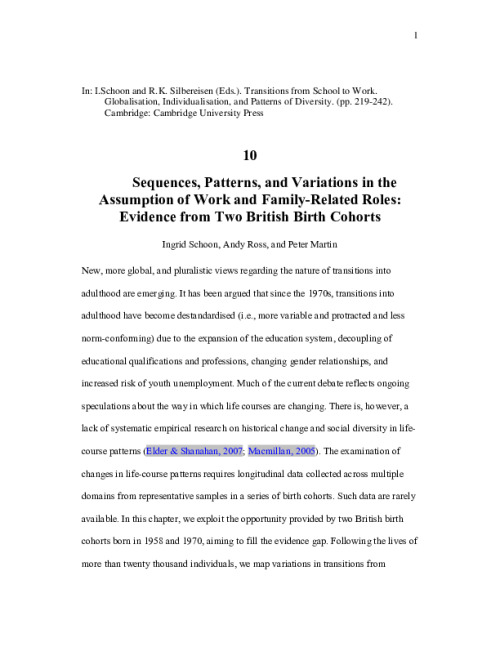New, more global, and pluralistic views regarding the nature of transitions into adulthood are emerging. It has been argued that since the 1970s, transitions into adulthood have become destandardised (i.e., more variable and protracted and less norm-conforming) due to the expansion of the education system, decoupling of educational qualifications and professions, changing gender relationships, and increased risk of youth unemployment. Much of the current debate reflects ongoing speculations about the way in which life courses are changing. There is, however, a lack of systematic empirical research on historical change and social diversity in life-course patterns (Elder & Shanahan, 2007; Macmillan, 2005). The examination of changes in life-course patterns requires longitudinal data collected across multiple domains from representative samples in a series of birth cohorts. Such data are rarely available. In this chapter, we exploit the opportunity provided by two British birth cohorts born in 1958 and 1970, aiming to fill the evidence gap. Following the lives of more than twenty thousand individuals, we map variations in transitions from adolescence to adult life and examine the ways in which transitions have been reshaping in times of social change. We examine hypotheses regarding the destandardisation of life courses in different, recent historical contexts and across different subgroups in the population. We also address methodological challenges in examining life-course changes and offer approaches on how to operationalise ideas concerning the transformation and variation in life courses a changing socio-historical context. In particular, this chapter draws on our recent work in applying Optimal Matching Analysis (OMA) (Martin, Schoon, & Ross, 2008) and latent class modelling (Ross, Schoon, Martin, & Sacker, 2009) to map transitions over time, and we extend these studies to identify patterns and variations in transition experiences. The findings indicate stability and change in transition experiences, as well as the continued influence of social background and gender. Social change has affected all, but not all in the same way.










